Frequent persons on Belgium's street signs
countries
182 names / 1889 streets
Albert I of Belgium
 124
Albert I was King of the Belgians from 23 December 1909 until his death in 1934.
124
Albert I was King of the Belgians from 23 December 1909 until his death in 1934.
Astrid of Sweden
 98
Astrid of Sweden was a member of the Swedish House of Bernadotte and later became Queen of the Belgians as the first wife of King Leopold III. Following her marriage to Leopold in November 1926, she...
98
Astrid of Sweden was a member of the Swedish House of Bernadotte and later became Queen of the Belgians as the first wife of King Leopold III. Following her marriage to Leopold in November 1926, she...
Guido Gezelle
 48
Guido Pieter Theodorus Josephus Gezelle was an influential writer and poet and a Roman Catholic priest from Belgium. He is famous for the use of the West Flemish dialect, but he also wrote in other...
48
Guido Pieter Theodorus Josephus Gezelle was an influential writer and poet and a Roman Catholic priest from Belgium. He is famous for the use of the West Flemish dialect, but he also wrote in other...
Saint Peter
 45
Saint Peter, also known as Peter the Apostle, Simon Peter, Simeon, Simon, or Cephas, was one of the Twelve Apostles of Jesus Christ and one of the first leaders of the early Christian Church. He...
45
Saint Peter, also known as Peter the Apostle, Simon Peter, Simeon, Simon, or Cephas, was one of the Twelve Apostles of Jesus Christ and one of the first leaders of the early Christian Church. He...
Hubertus
 43
Hubertus or Hubert was a Christian saint who became the first bishop of Liège in 708 A.D. He is the patron saint of hunters, mathematicians, opticians and metalworkers. Known as the "Apostle of the...
43
Hubertus or Hubert was a Christian saint who became the first bishop of Liège in 708 A.D. He is the patron saint of hunters, mathematicians, opticians and metalworkers. Known as the "Apostle of the...
Martin of Tours
 42
Martin of Tours, also known as Martin the Merciful, was the third bishop of Tours. He has become one of the most familiar and recognizable Christian saints in France, heralded as the patron saint of...
42
Martin of Tours, also known as Martin the Merciful, was the third bishop of Tours. He has become one of the most familiar and recognizable Christian saints in France, heralded as the patron saint of...
Saint Anne
 42
According to apocrypha, as well as Christian and Islamic tradition, Saint Anne was the mother of Mary, the wife of Joachim and the maternal grandmother of Jesus. Mary's mother is not named in the...
42
According to apocrypha, as well as Christian and Islamic tradition, Saint Anne was the mother of Mary, the wife of Joachim and the maternal grandmother of Jesus. Mary's mother is not named in the...
Saint Roch
 41
Roch, also called Rock in English, was a Majorcan Catholic confessor whose death is commemorated on 16 August and 9 September in Italy; he was especially invoked against the plague. He has the...
41
Roch, also called Rock in English, was a Majorcan Catholic confessor whose death is commemorated on 16 August and 9 September in Italy; he was especially invoked against the plague. He has the...
Anthony of Padua
 39
Anthony of Padua, OFM or Anthony of Lisbon was a Portuguese Catholic priest and friar of the Franciscan Order.
39
Anthony of Padua, OFM or Anthony of Lisbon was a Portuguese Catholic priest and friar of the Franciscan Order.
Joseph Wauters (homme politique)
 39
Joseph Wauters, né à Rosoux-Crenwick le 8 novembre 1875 et décédé à Uccle le 30 juin 1929, est un homme politique belge qui habitait à Waremme.
39
Joseph Wauters, né à Rosoux-Crenwick le 8 novembre 1875 et décédé à Uccle le 30 juin 1929, est un homme politique belge qui habitait à Waremme.
Geertgen tot Sint Jans
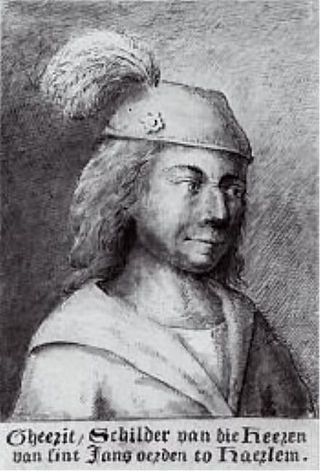 36
Geertgen tot Sint Jans, also known as Geertgen van Haarlem, Gerrit van Haarlem, Gerrit Gerritsz, Gheertgen, Geerrit, Gheerrit, or any other diminutive form of Gerald, was an Early Netherlandish...
36
Geertgen tot Sint Jans, also known as Geertgen van Haarlem, Gerrit van Haarlem, Gerrit Gerritsz, Gheertgen, Geerrit, Gheerrit, or any other diminutive form of Gerald, was an Early Netherlandish...
Leopold II of Belgium
 35
Leopold II was the second King of the Belgians from 1865 to 1909, and the founder and sole owner of the Congo Free State from 1885 to 1908.
35
Leopold II was the second King of the Belgians from 1865 to 1909, and the founder and sole owner of the Congo Free State from 1885 to 1908.
Emile Vandervelde
 35
Emile Vandervelde was a Belgian socialist politician. Nicknamed "the boss", Vandervelde was a leading figure in the Belgian Labour Party (POB–BWP) and in international socialism.
35
Emile Vandervelde was a Belgian socialist politician. Nicknamed "the boss", Vandervelde was a leading figure in the Belgian Labour Party (POB–BWP) and in international socialism.
Saint Joseph
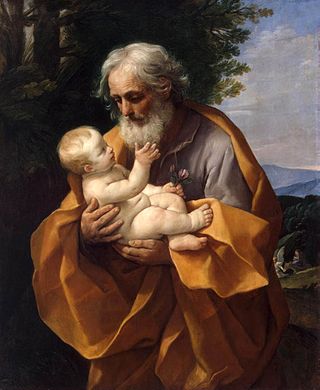 32
Joseph was a 1st-century Jewish man of Nazareth who, according to the canonical Gospels, was married to Mary, the mother of Jesus, and was the legal father of Jesus.
32
Joseph was a 1st-century Jewish man of Nazareth who, according to the canonical Gospels, was married to Mary, the mother of Jesus, and was the legal father of Jesus.
Baudouin of Belgium
 29
Baudouin was King of the Belgians from 17 July 1951 until his death in 1993. He was the last Belgian king to be sovereign of the Congo, before it became independent in 1960 and became the Democratic...
29
Baudouin was King of the Belgians from 17 July 1951 until his death in 1993. He was the last Belgian king to be sovereign of the Congo, before it became independent in 1960 and became the Democratic...
Joseph Cardijn
 27
Joseph Leo Cardijn was a Belgian Catholic cardinal and the founder of the movement of Young Christian Workers.
27
Joseph Leo Cardijn was a Belgian Catholic cardinal and the founder of the movement of Young Christian Workers.
Elisabeth of Bavaria, Queen of the Belgians
 27
Elisabeth of Bavaria was Queen of the Belgians from 23 December 1909 to 17 February 1934 as the wife of King Albert I, and a duchess in Bavaria by birth. She was the mother of King Leopold III of...
27
Elisabeth of Bavaria was Queen of the Belgians from 23 December 1909 to 17 February 1934 as the wife of King Albert I, and a duchess in Bavaria by birth. She was the mother of King Leopold III of...
Hendrik Conscience
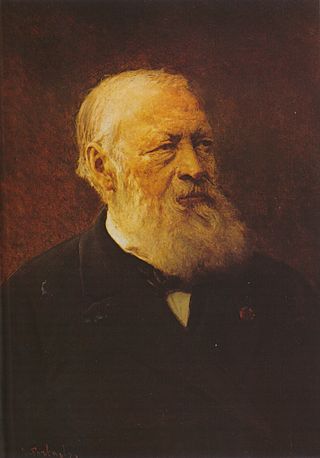 27
Henri (Hendrik) Conscience was a Belgian author. He is considered the pioneer of Dutch-language literature in Flanders, writing at a time when Belgium was dominated by the French language among the...
27
Henri (Hendrik) Conscience was a Belgian author. He is considered the pioneer of Dutch-language literature in Flanders, writing at a time when Belgium was dominated by the French language among the...
Stijn Streuvels
 25
Stijn Streuvels, born Franciscus (Frank) Petrus Maria Lateur, was a Flemish Belgian writer.
25
Stijn Streuvels, born Franciscus (Frank) Petrus Maria Lateur, was a Flemish Belgian writer.
Saint Barbara
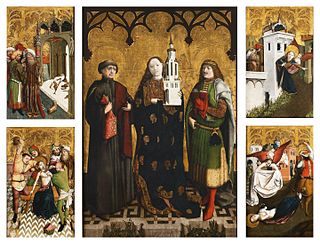 25
Saint Barbara, known in the Eastern Orthodox Church as the Great Martyr Barbara, was an early Christian Greek saint and martyr.
25
Saint Barbara, known in the Eastern Orthodox Church as the Great Martyr Barbara, was an early Christian Greek saint and martyr.
Lambert of Maastricht
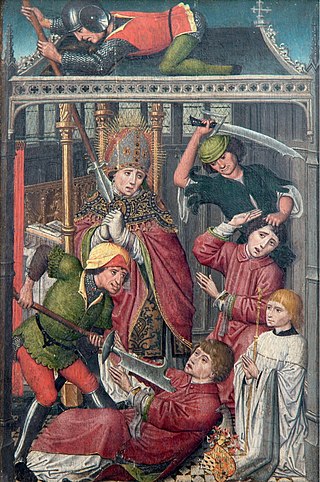 24
Lambert of Maastricht, commonly referred to as Saint Lambert, was the bishop of Maastricht-Liège (Tongeren) from about 670 until his death. Lambert denounced Pepin's liaison with his mistress or...
24
Lambert of Maastricht, commonly referred to as Saint Lambert, was the bishop of Maastricht-Liège (Tongeren) from about 670 until his death. Lambert denounced Pepin's liaison with his mistress or...
Albrecht Rodenbach
 24
Albertus "Albrecht" Petrus Josephus Mansuetus Ferdinandus Rodenbach was a Flemish poet, and a leader in the revival of Flemish literature that occurred in the late 19th century. He is more noteworthy...
24
Albertus "Albrecht" Petrus Josephus Mansuetus Ferdinandus Rodenbach was a Flemish poet, and a leader in the revival of Flemish literature that occurred in the late 19th century. He is more noteworthy...
Cornelius van Steenoven
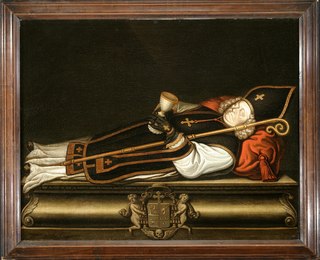 24
Cornelis van Steenoven was a Dutch Roman Catholic priest who later served as the seventh Old Catholic Archbishop of Utrecht from 1724 to 1725. Consecrated without the permission of the pope,...
24
Cornelis van Steenoven was a Dutch Roman Catholic priest who later served as the seventh Old Catholic Archbishop of Utrecht from 1724 to 1725. Consecrated without the permission of the pope,...
Leopold III of Belgium
 23
Leopold III was King of the Belgians from 23 February 1934 until his abdication on 16 July 1951. At the outbreak of World War II, Leopold tried to maintain Belgian neutrality, but after the German...
23
Leopold III was King of the Belgians from 23 February 1934 until his abdication on 16 July 1951. At the outbreak of World War II, Leopold tried to maintain Belgian neutrality, but after the German...
Adriaen van de Venne
 23
Adriaen Pietersz van de Venne, was a versatile Dutch Golden Age painter of allegories, genre subjects, and portraits, as well as a miniaturist, book illustrator, designer of political satires, and...
23
Adriaen Pietersz van de Venne, was a versatile Dutch Golden Age painter of allegories, genre subjects, and portraits, as well as a miniaturist, book illustrator, designer of political satires, and...
Peter Benoit
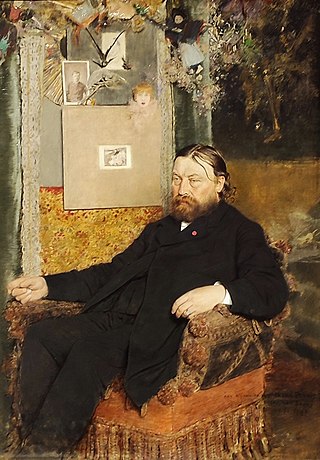 22
Peter Benoit was a Flemish composer of Belgian nationality.
22
Peter Benoit was a Flemish composer of Belgian nationality.
Franklin D. Roosevelt
 21
Franklin Delano Roosevelt, commonly known by his initials FDR, was an American statesman and politician who served as the 32nd president of the United States from 1933 until his death in 1945. He was...
21
Franklin Delano Roosevelt, commonly known by his initials FDR, was an American statesman and politician who served as the 32nd president of the United States from 1933 until his death in 1945. He was...
Amandus
 20
Amandus, commonly called Saint Amand, was a bishop of Tongeren-Maastricht and one of the catholic missionaries of Flanders. He is venerated as a saint, particularly in France and Belgium.
20
Amandus, commonly called Saint Amand, was a bishop of Tongeren-Maastricht and one of the catholic missionaries of Flanders. He is venerated as a saint, particularly in France and Belgium.
Peter Paul Rubens
 20
Sir Peter Paul Rubens was a Flemish artist and diplomat. He is considered the most influential artist of the Flemish Baroque tradition. Rubens's highly charged compositions reference erudite aspects...
20
Sir Peter Paul Rubens was a Flemish artist and diplomat. He is considered the most influential artist of the Flemish Baroque tradition. Rubens's highly charged compositions reference erudite aspects...
Saint George
 18
Saint George, also George of Lydda, was an early Christian martyr who is venerated as a saint in Christianity. According to tradition, he was a soldier in the Roman army. Of Cappadocian Greek origin,...
18
Saint George, also George of Lydda, was an early Christian martyr who is venerated as a saint in Christianity. According to tradition, he was a soldier in the Roman army. Of Cappadocian Greek origin,...
Hugo Verriest
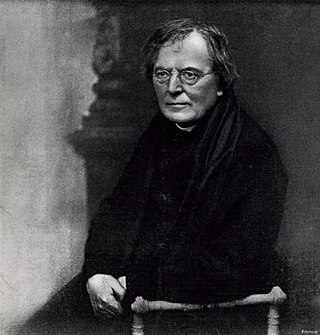 18
Hugo Nestor Verriest was een Vlaams priester, dichter, schrijver en redenaar. Hij was een van de belangrijkste exponenten van het cultuurflamingantisme alsook bevorderaar van de politieke Vlaamse...
18
Hugo Nestor Verriest was een Vlaams priester, dichter, schrijver en redenaar. Hij was een van de belangrijkste exponenten van het cultuurflamingantisme alsook bevorderaar van de politieke Vlaamse...
Désiré-Joseph Mercier
 17
Désiré Félicien François Joseph Mercier was a Belgian cardinal of the Catholic Church and a noted scholar. A Thomist scholar, he had several of his works translated into other European languages. He...
17
Désiré Félicien François Joseph Mercier was a Belgian cardinal of the Catholic Church and a noted scholar. A Thomist scholar, he had several of his works translated into other European languages. He...
Ernest Claes
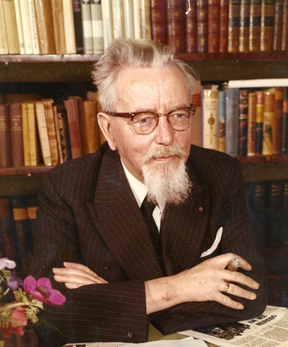 17
Andreas Ernestus Josephus Claes was a Belgian author. He is best known for his regional novels, including De Witte ("Whitey"), which was the source material for the first Flemish movie: De Witte...
17
Andreas Ernestus Josephus Claes was a Belgian author. He is best known for his regional novels, including De Witte ("Whitey"), which was the source material for the first Flemish movie: De Witte...
Jean de Brébeuf
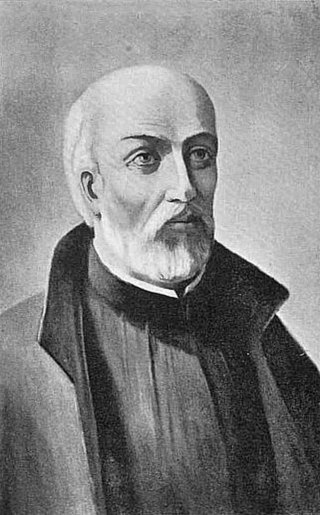 17
Jean de Brébeuf, SJ was a French Jesuit missionary who travelled to New France (Canada) in 1625. There he worked primarily with the Huron for the rest of his life, except for a few years in France...
17
Jean de Brébeuf, SJ was a French Jesuit missionary who travelled to New France (Canada) in 1625. There he worked primarily with the Huron for the rest of his life, except for a few years in France...
Fabiola of Belgium
 17
Fabiola Fernanda María-de-las-Victorias Antonia Adelaida de Mora y Aragón was Queen of the Belgians from her marriage to King Baudouin in 1960 until his death in 1993. The couple had no children, as...
17
Fabiola Fernanda María-de-las-Victorias Antonia Adelaida de Mora y Aragón was Queen of the Belgians from her marriage to King Baudouin in 1960 until his death in 1993. The couple had no children, as...
Saint Nicholas
 16
Saint Nicholas of Myra, also known as Nicholas of Bari, was an early Christian bishop of Greek descent from the maritime city of Patara in Anatolia during the time of the Roman Empire. Because of the...
16
Saint Nicholas of Myra, also known as Nicholas of Bari, was an early Christian bishop of Greek descent from the maritime city of Patara in Anatolia during the time of the Roman Empire. Because of the...
Jean Jaurès
 16
Auguste Marie Joseph Jean Léon Jaurès, commonly referred to as Jean Jaurès, was a French Socialist leader. Initially a Moderate Republican, he later became one of the first social democrats and the...
16
Auguste Marie Joseph Jean Léon Jaurès, commonly referred to as Jean Jaurès, was a French Socialist leader. Initially a Moderate Republican, he later became one of the first social democrats and the...
Saint Sebastian
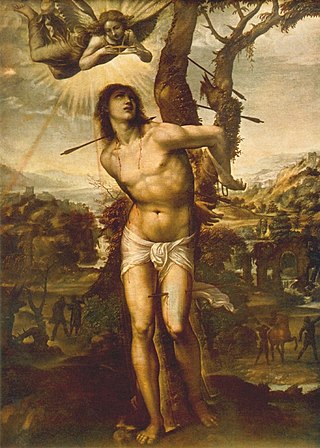 16
Sebastian was an early Christian saint and martyr. According to traditional belief, he was killed during the Diocletianic Persecution of Christians. He was initially tied to a post or tree and shot...
16
Sebastian was an early Christian saint and martyr. According to traditional belief, he was killed during the Diocletianic Persecution of Christians. He was initially tied to a post or tree and shot...
Donatus of Arezzo
 15
Saint Donatus of Arezzo is the patron saint of Arezzo, and considered a bishop of the city.
15
Saint Donatus of Arezzo is the patron saint of Arezzo, and considered a bishop of the city.
Saint Lawrence
 14
Saint Lawrence or Laurence was one of the seven deacons of the city of Rome under Pope Sixtus II who were martyred in the persecution of the Christians that the Roman Emperor Valerian ordered in 258.
14
Saint Lawrence or Laurence was one of the seven deacons of the city of Rome under Pope Sixtus II who were martyred in the persecution of the Christians that the Roman Emperor Valerian ordered in 258.
Paul Pastur
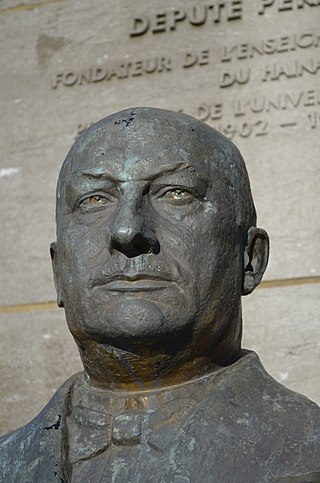 12
Paul Pastur was a Belgian lawyer and politician from Hainaut. He obtained a law degree of the University of Liège, and started working at the bar of Charleroi in 1893.
12
Paul Pastur was a Belgian lawyer and politician from Hainaut. He obtained a law degree of the University of Liège, and started working at the bar of Charleroi in 1893.
Charlemagne
 12
Charlemagne was King of the Franks from 768, King of the Lombards from 774, and Emperor of the Carolingian Empire from 800, holding all these titles until his death in 814. Charlemagne succeeded in...
12
Charlemagne was King of the Franks from 768, King of the Lombards from 774, and Emperor of the Carolingian Empire from 800, holding all these titles until his death in 814. Charlemagne succeeded in...
John F. Kennedy
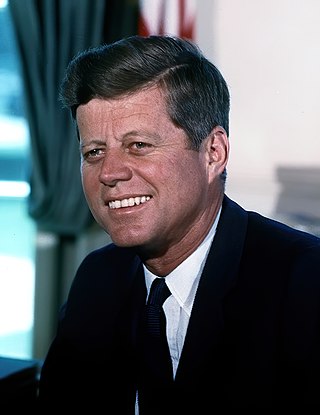 12
John Fitzgerald Kennedy, often referred to as JFK, was an American politician who served as the 35th president of the United States from 1961 until his assassination in 1963. He was the youngest...
12
John Fitzgerald Kennedy, often referred to as JFK, was an American politician who served as the 35th president of the United States from 1961 until his assassination in 1963. He was the youngest...
Paul the Apostle
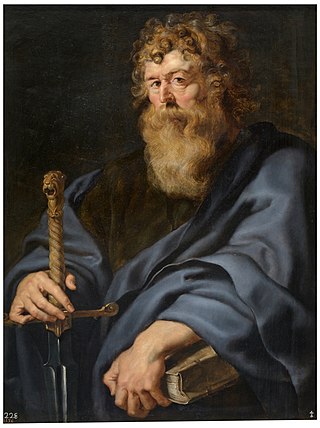 12
Paul, commonly known as Paul the Apostle and Saint Paul, was a Christian apostle who spread the teachings of Jesus in the first-century world. For his contributions towards the New Testament, he is...
12
Paul, commonly known as Paul the Apostle and Saint Paul, was a Christian apostle who spread the teachings of Jesus in the first-century world. For his contributions towards the New Testament, he is...
Winston Churchill
 11
Sir Winston Leonard Spencer Churchill was a British statesman, soldier, and writer who twice served as Prime Minister of the United Kingdom, from 1940 to 1945 during the Second World War, and again...
11
Sir Winston Leonard Spencer Churchill was a British statesman, soldier, and writer who twice served as Prime Minister of the United Kingdom, from 1940 to 1945 during the Second World War, and again...
Zénobe Gramme
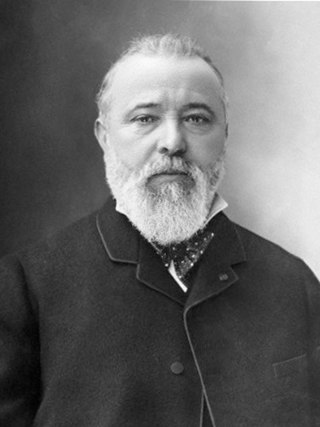 11
Zénobe Théophile Gramme was a Belgian electrical engineer. He was born at Jehay-Bodegnée on 4 April 1826, the sixth child of Mathieu-Joseph Gramme, and died at Bois-Colombes on 20 January 1901. He...
11
Zénobe Théophile Gramme was a Belgian electrical engineer. He was born at Jehay-Bodegnée on 4 April 1826, the sixth child of Mathieu-Joseph Gramme, and died at Bois-Colombes on 20 January 1901. He...
Jean Volders
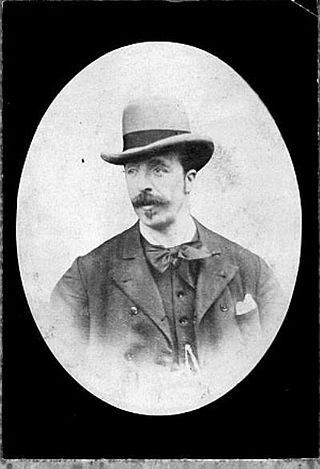 11
Jean Volders est un journaliste et homme politique belge est l’un des fondateurs et premiers dirigeants du Parti ouvrier belge et du journal Le Peuple, organe du parti, dont il fut le rédacteur en...
11
Jean Volders est un journaliste et homme politique belge est l’un des fondateurs et premiers dirigeants du Parti ouvrier belge et du journal Le Peuple, organe du parti, dont il fut le rédacteur en...
Michael (archangel)
 10
Michael, also called Saint Michael the Archangel, Archangel Michael and Saint Michael the Taxiarch is an archangel in Judaism, Christianity, Islam, and the Baha'i faith. The earliest surviving...
10
Michael, also called Saint Michael the Archangel, Archangel Michael and Saint Michael the Taxiarch is an archangel in Judaism, Christianity, Islam, and the Baha'i faith. The earliest surviving...
Saint Eligius
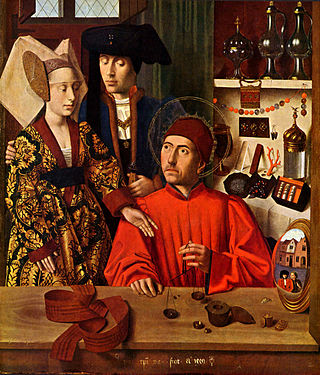 10
Eligius, venerated as Saint Eligius, was a Frankish goldsmith, courtier, and bishop who was chief counsellor to Dagobert I and later Bishop of Noyon–Tournai. His deeds were recorded in Vita Sancti...
10
Eligius, venerated as Saint Eligius, was a Frankish goldsmith, courtier, and bishop who was chief counsellor to Dagobert I and later Bishop of Noyon–Tournai. His deeds were recorded in Vita Sancti...
James the Great
 9
James the Great was one of the Twelve Apostles of Jesus. According to the New Testament, he was the second of the apostles to die, and the first to be martyred. Saint James is the patron saint of...
9
James the Great was one of the Twelve Apostles of Jesus. According to the New Testament, he was the second of the apostles to die, and the first to be martyred. Saint James is the patron saint of...
Jan van Eyck
 9
Jan van Eyck was a Flemish painter active in Bruges who was one of the early innovators of what became known as Early Netherlandish painting, and one of the most significant representatives of Early...
9
Jan van Eyck was a Flemish painter active in Bruges who was one of the early innovators of what became known as Early Netherlandish painting, and one of the most significant representatives of Early...
Jan Breydel
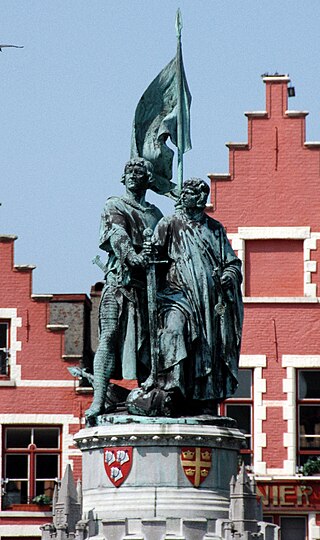 9
Jan Breydel is credited with leading the Bruges Matins, a violent uprising against Philip the Fair. He is said to have played a major role in the Franco-Flemish War, even though his authenticity has...
9
Jan Breydel is credited with leading the Bruges Matins, a violent uprising against Philip the Fair. He is said to have played a major role in the Franco-Flemish War, even though his authenticity has...
Pieter Bruegel the Elder
 9
Pieter Bruegel the Elder was among the most significant artists of Dutch and Flemish Renaissance painting, a painter and printmaker, known for his landscapes and peasant scenes ; he was a pioneer in...
9
Pieter Bruegel the Elder was among the most significant artists of Dutch and Flemish Renaissance painting, a painter and printmaker, known for his landscapes and peasant scenes ; he was a pioneer in...
Margaret Mary Alacoque
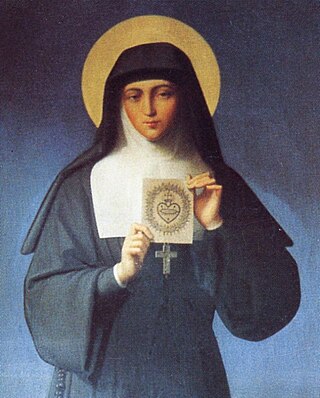 9
Margaret Mary Alacoque, VHM was a French Catholic Visitation nun and mystic who promoted devotion to the Sacred Heart of Jesus in its modern form.
9
Margaret Mary Alacoque, VHM was a French Catholic Visitation nun and mystic who promoted devotion to the Sacred Heart of Jesus in its modern form.
Saint Remigius
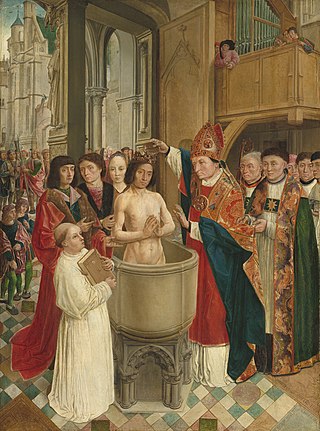 8
Remigius was the Bishop of Reims and "Apostle of the Franks". On 25 December 496, he baptised Clovis I, King of the Franks. The baptism, leading to about 3000 additional converts, was an important...
8
Remigius was the Bishop of Reims and "Apostle of the Franks". On 25 December 496, he baptised Clovis I, King of the Franks. The baptism, leading to about 3000 additional converts, was an important...
Henry Dunant
 8
Henry Dunant, also known as Henri Dunant, was a Swiss humanitarian, businessman, social activist, and co-founder of the Red Cross. His humanitarian efforts won him the first Nobel Peace Prize in 1901.
8
Henry Dunant, also known as Henri Dunant, was a Swiss humanitarian, businessman, social activist, and co-founder of the Red Cross. His humanitarian efforts won him the first Nobel Peace Prize in 1901.
Catherine of Alexandria
 8
Catherine of Alexandria, also spelled Katherine is, according to tradition, a Christian saint and virgin, who was martyred in the early fourth century at the hands of the emperor Maxentius. According...
8
Catherine of Alexandria, also spelled Katherine is, according to tradition, a Christian saint and virgin, who was martyred in the early fourth century at the hands of the emperor Maxentius. According...
Jacob van Maerlant
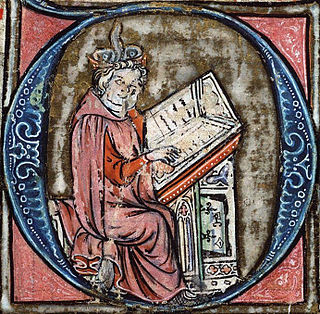 8
Jacob van Maerlant was a Flemish poet of the 13th century and one of the most important Middle Dutch authors during the Middle Ages.
8
Jacob van Maerlant was a Flemish poet of the 13th century and one of the most important Middle Dutch authors during the Middle Ages.
Louis de Brouckère
 8
Louis de Brouckère was a Belgian socialist journalist, politician and academic. He was a member of the Belgian Labour Party from the 1890s.
8
Louis de Brouckère was a Belgian socialist journalist, politician and academic. He was a member of the Belgian Labour Party from the 1890s.
André Renard
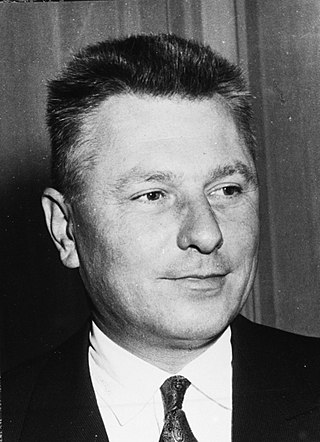 8
André Renard was a Belgian trade union leader who, in the aftermath of World War II, became an influential figure within the Walloon Movement.
8
André Renard was a Belgian trade union leader who, in the aftermath of World War II, became an influential figure within the Walloon Movement.
Leopold I of Belgium
 7
Leopold I was the first King of the Belgians, reigning from 21 July 1831 until his death in 1865.
7
Leopold I was the first King of the Belgians, reigning from 21 July 1831 until his death in 1865.
Bernard Montgomery
 7
Field Marshal Bernard Law Montgomery, 1st Viscount Montgomery of Alamein,, nicknamed "Monty", was a senior British Army officer who served in the First World War, the Irish War of Independence and...
7
Field Marshal Bernard Law Montgomery, 1st Viscount Montgomery of Alamein,, nicknamed "Monty", was a senior British Army officer who served in the First World War, the Irish War of Independence and...
Paul Delvaux
 7
Paul Delvaux was a Belgian painter noted for his dream-like scenes of women, classical architecture, trains and train stations, and skeletons, often in combination. He is often considered a...
7
Paul Delvaux was a Belgian painter noted for his dream-like scenes of women, classical architecture, trains and train stations, and skeletons, often in combination. He is often considered a...
Paul Janson
 7
Paul Janson was a Belgian liberal politician.
7
Paul Janson was a Belgian liberal politician.
Andrew the Apostle
 7
Andrew the Apostle, also called Saint Andrew, was an apostle of Jesus. According to the New Testament, he was a fisherman and one of the Twelve Apostles chosen by Jesus. The title First-Called stems...
7
Andrew the Apostle, also called Saint Andrew, was an apostle of Jesus. According to the New Testament, he was a fisherman and one of the Twelve Apostles chosen by Jesus. The title First-Called stems...
Ferdinand Foch
 7
Ferdinand Foch was a French general, Marshal of France and member of the Académie Française. He distinguished himself as Supreme Allied Commander on the Western Front during the First World War in...
7
Ferdinand Foch was a French general, Marshal of France and member of the Académie Française. He distinguished himself as Supreme Allied Commander on the Western Front during the First World War in...
Adolf Daens
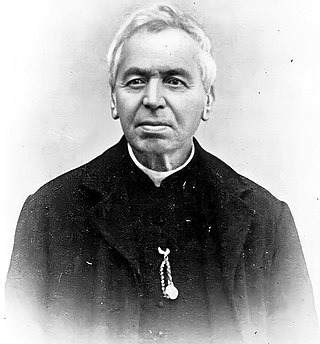 7
Adolf Daens was a Flemish priest from Aalst. Daens was a Jesuit from 1859 to 1871, but is especially known for his socio-political involvement after he joined the diocesan clergy. He created the...
7
Adolf Daens was a Flemish priest from Aalst. Daens was a Jesuit from 1859 to 1871, but is especially known for his socio-political involvement after he joined the diocesan clergy. He created the...
August Vermeylen
 7
August Vermeylen was a Belgian writer and literature critic. In 1893 he founded the literary journal Van Nu en Straks. He studied history at the Free University of Brussels (ULB), and became a...
7
August Vermeylen was a Belgian writer and literature critic. In 1893 he founded the literary journal Van Nu en Straks. He studied history at the Free University of Brussels (ULB), and became a...
Francisco Ferrer
 6
Francesc Ferrer i Guàrdia, widely known as Francisco Ferrer, was a Spanish radical freethinker, anarchist, and educationist behind a network of secular, private, libertarian schools in and around...
6
Francesc Ferrer i Guàrdia, widely known as Francisco Ferrer, was a Spanish radical freethinker, anarchist, and educationist behind a network of secular, private, libertarian schools in and around...
Father Damien
 6
Father Damien or Saint Damien of Molokai or Saint Damien De Veuster, born Jozef De Veuster, was a Roman Catholic priest from Belgium and member of the Congregation of the Sacred Hearts of Jesus and...
6
Father Damien or Saint Damien of Molokai or Saint Damien De Veuster, born Jozef De Veuster, was a Roman Catholic priest from Belgium and member of the Congregation of the Sacred Hearts of Jesus and...
François Bovesse
 6
François Louis Charles Marie Bovesse, dit Franz des Chalands, est un homme politique belge et un militant wallon.
6
François Louis Charles Marie Bovesse, dit Franz des Chalands, est un homme politique belge et un militant wallon.
Willem Elsschot
 6
Alphonsus Josephus de Ridder was a Belgian writer and poet who wrote under the pseudonym Willem Elsschot. One of the most prominent Flemish authors, his most famous work, Cheese (1933) is the most...
6
Alphonsus Josephus de Ridder was a Belgian writer and poet who wrote under the pseudonym Willem Elsschot. One of the most prominent Flemish authors, his most famous work, Cheese (1933) is the most...
Fernand Jacquet
 6
Captain-Commandant Fernand Maximillian Leon Jacquet was a World War I flying ace credited with seven aerial victories. He was the first Belgian pilot to score an aerial victory, on 17 April 1915, and...
6
Captain-Commandant Fernand Maximillian Leon Jacquet was a World War I flying ace credited with seven aerial victories. He was the first Belgian pilot to score an aerial victory, on 17 April 1915, and...
Genevieve
 6
Genevieve was a consecrated virgin, and is the patron saint of Paris in the Catholic and Orthodox traditions. Her feast day is on 3 January.
6
Genevieve was a consecrated virgin, and is the patron saint of Paris in the Catholic and Orthodox traditions. Her feast day is on 3 January.
Saint Christopher
 6
Saint Christopher is venerated by several Christian denominations as a martyr killed in the reign of the 3rd-century Roman emperor Decius, or alternatively under the emperor Maximinus Daia. There...
6
Saint Christopher is venerated by several Christian denominations as a martyr killed in the reign of the 3rd-century Roman emperor Decius, or alternatively under the emperor Maximinus Daia. There...
Saint Fiacre
 6
Fiacre is the name of three different Irish saints, the most famous of which is Fiacre of Breuil, the priest, abbot, hermit, and gardener of the seventh century who was famous for his sanctity and...
6
Fiacre is the name of three different Irish saints, the most famous of which is Fiacre of Breuil, the priest, abbot, hermit, and gardener of the seventh century who was famous for his sanctity and...
Servatius of Tongeren
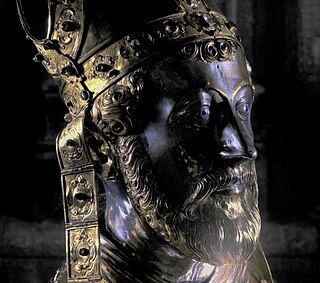 6
Saint Servatius was bishop of Tongeren. Servatius is patron saint of the city of Maastricht and the towns of Schijndel and Grimbergen. He is one of the Ice Saints. His feast day is May 13.
6
Saint Servatius was bishop of Tongeren. Servatius is patron saint of the city of Maastricht and the towns of Schijndel and Grimbergen. He is one of the Ice Saints. His feast day is May 13.
Cyriel Buysse
 5
Cyrillus Gustave Emile "Cyriel" Buysse was a Flemish naturalist author and playwright. He also wrote under the following pseudonyms: Louis Bonheyden, Prosper Van Hove and Robert Palmer.
5
Cyrillus Gustave Emile "Cyriel" Buysse was a Flemish naturalist author and playwright. He also wrote under the following pseudonyms: Louis Bonheyden, Prosper Van Hove and Robert Palmer.
Maria Theresa
 5
Maria Theresa was ruler of the Habsburg dominions from 1740 until her death in 1780, and the only woman to hold the position suo jure. She was the sovereign of Austria, Hungary, Croatia, Bohemia,...
5
Maria Theresa was ruler of the Habsburg dominions from 1740 until her death in 1780, and the only woman to hold the position suo jure. She was the sovereign of Austria, Hungary, Croatia, Bohemia,...
Georges Truffaut (1901-1942)
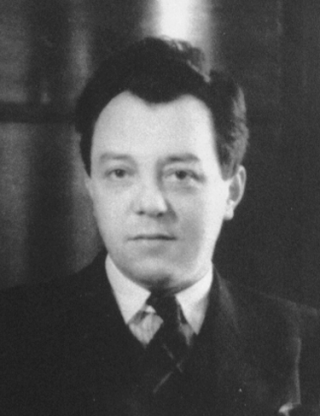 5
Georges Truffaut, né à Liège le 22 décembre 1901 et mort à Hereford en Angleterre 3 avril 1942, est un homme politique belge.
5
Georges Truffaut, né à Liège le 22 décembre 1901 et mort à Hereford en Angleterre 3 avril 1942, est un homme politique belge.
Herman Teirlinck
 5
Herman Louis Cesar Teirlinck was a Belgian writer. He was the fifth child and only son of Isidoor Teirlinck and Oda van Nieuwenhove, who were both teachers in Brussels. As a child, he had frail...
5
Herman Louis Cesar Teirlinck was a Belgian writer. He was the fifth child and only son of Isidoor Teirlinck and Oda van Nieuwenhove, who were both teachers in Brussels. As a child, he had frail...
Ernest Malvoz
 5
Ernest Joseph Malvoz foi um médico e investigador belga.
5
Ernest Joseph Malvoz foi um médico e investigador belga.
Leonard of Noblac
 5
Leonard of Noblac, is a Frankish saint closely associated with the town and abbey of Saint-Léonard-de-Noblat, in Haute-Vienne, in the Limousin region of France. He was converted to Christianity along...
5
Leonard of Noblac, is a Frankish saint closely associated with the town and abbey of Saint-Léonard-de-Noblat, in Haute-Vienne, in the Limousin region of France. He was converted to Christianity along...
Eugène Ysaÿe
 5
Eugène-Auguste Ysaÿe was a Belgian virtuoso violinist, composer, and conductor. He was regarded as "The King of the Violin", or, as Nathan Milstein put it, the "tsar".
5
Eugène-Auguste Ysaÿe was a Belgian virtuoso violinist, composer, and conductor. He was regarded as "The King of the Violin", or, as Nathan Milstein put it, the "tsar".
Marie-José of Belgium
 5
Marie-José of Belgium was the last Queen of Italy. Her 34-day tenure as queen consort earned her the nickname "the May Queen".
5
Marie-José of Belgium was the last Queen of Italy. Her 34-day tenure as queen consort earned her the nickname "the May Queen".
Erasmus
 5
Desiderius Erasmus Roterodamus was a Dutch Christian humanist, Catholic theologian, educationalist, satirist, and philosopher. Through his vast number of translations, books, essays, prayers and...
5
Desiderius Erasmus Roterodamus was a Dutch Christian humanist, Catholic theologian, educationalist, satirist, and philosopher. Through his vast number of translations, books, essays, prayers and...
Louis Pasteur
 5
Louis Pasteur was a French chemist, pharmacist, and microbiologist renowned for his discoveries of the principles of vaccination, microbial fermentation, and pasteurization, the last of which was...
5
Louis Pasteur was a French chemist, pharmacist, and microbiologist renowned for his discoveries of the principles of vaccination, microbial fermentation, and pasteurization, the last of which was...
Alice Nahon
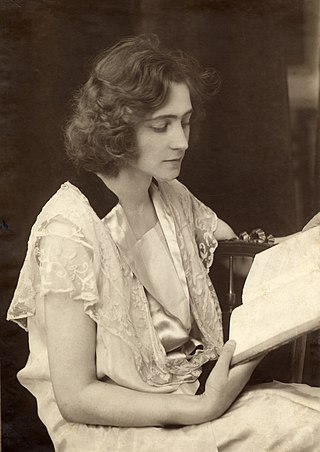 5
Alice Nahon was a Belgian poet from Antwerp.
5
Alice Nahon was a Belgian poet from Antwerp.
César De Paepe
 5
César De Paepe was a Belgian medical doctor, socialist activist and a prominent proponent of syndicalism whose work strongly influenced the Industrial Workers of the World and the syndicalist...
5
César De Paepe was a Belgian medical doctor, socialist activist and a prominent proponent of syndicalism whose work strongly influenced the Industrial Workers of the World and the syndicalist...
Marie Curie
 5
Maria Salomea Skłodowska-Curie, known simply as Marie Curie, was a Polish and naturalised-French physicist and chemist who conducted pioneering research on radioactivity. She was the first woman to...
5
Maria Salomea Skłodowska-Curie, known simply as Marie Curie, was a Polish and naturalised-French physicist and chemist who conducted pioneering research on radioactivity. She was the first woman to...
David Teniers the Younger
 5
David Teniers the Younger or David Teniers II was a Flemish Baroque painter, printmaker, draughtsman, miniaturist painter, staffage painter, copyist and art curator. He was an extremely versatile...
5
David Teniers the Younger or David Teniers II was a Flemish Baroque painter, printmaker, draughtsman, miniaturist painter, staffage painter, copyist and art curator. He was an extremely versatile...
Hans Memling
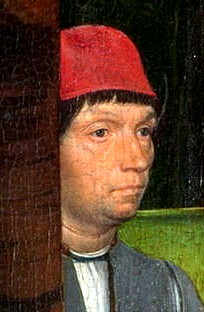 5
Hans Memling was a German-Flemish painter who worked in the tradition of Early Netherlandish painting. Born in the Middle Rhine region, he probably spent his childhood in Mainz. During his...
5
Hans Memling was a German-Flemish painter who worked in the tradition of Early Netherlandish painting. Born in the Middle Rhine region, he probably spent his childhood in Mainz. During his...
Camille Lemonnier
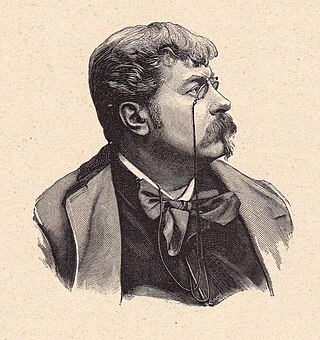 5
Antoine Louis Camille Lemonnier was a Belgian writer, poet and journalist. He was a member of the Symbolist La Jeune Belgique group, but his best known works are realist. His first work was Salon de...
5
Antoine Louis Camille Lemonnier was a Belgian writer, poet and journalist. He was a member of the Symbolist La Jeune Belgique group, but his best known works are realist. His first work was Salon de...
Dieric Bouts
 4
Dieric Bouts was an Early Netherlandish painter. Bouts may have studied under Rogier van der Weyden, and his work was influenced by van der Weyden and Jan van Eyck. He worked in Leuven from 1457...
4
Dieric Bouts was an Early Netherlandish painter. Bouts may have studied under Rogier van der Weyden, and his work was influenced by van der Weyden and Jan van Eyck. He worked in Leuven from 1457...
Woodrow Wilson
 4
Thomas Woodrow Wilson was an American politician and academic who served as the 28th president of the United States from 1913 to 1921. A member of the Democratic Party, Wilson served as the president...
4
Thomas Woodrow Wilson was an American politician and academic who served as the 28th president of the United States from 1913 to 1921. A member of the Democratic Party, Wilson served as the president...
Emile Claus
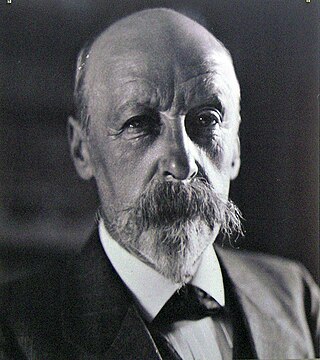 4
Emile Claus was a Belgian painter.
4
Emile Claus was a Belgian painter.
Godelieve
 4
Saint Godelieve is a Flemish saint. She behaved with charity & gentleness to all, accepting an arranged marriage as was the custom, but her husband and family turned out to be abusive. Eventually he...
4
Saint Godelieve is a Flemish saint. She behaved with charity & gentleness to all, accepting an arranged marriage as was the custom, but her husband and family turned out to be abusive. Eventually he...
Saint Giles
 4
Saint Giles, also known as Giles the Hermit, was a hermit or monk active in the lower Rhône most likely in the 7th century. Revered as a saint, his cult became widely diffused but his hagiography is...
4
Saint Giles, also known as Giles the Hermit, was a hermit or monk active in the lower Rhône most likely in the 7th century. Revered as a saint, his cult became widely diffused but his hagiography is...
Charles de Gaulle
 4
Charles André Joseph Marie de Gaulle was a French army officer and statesman who led the Free French Forces against Nazi Germany in World War II and chaired the Provisional Government of the French...
4
Charles André Joseph Marie de Gaulle was a French army officer and statesman who led the Free French Forces against Nazi Germany in World War II and chaired the Provisional Government of the French...
Gervasius and Protasius
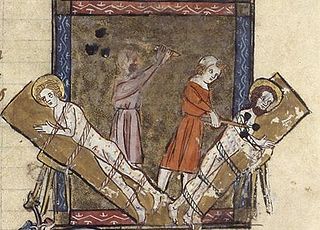 4
Gervasius and Protasius are venerated as Christian martyrs, probably of the 2nd century. They are the patron saints of Milan and of haymakers and are invoked for the discovery of thieves. Their feast...
4
Gervasius and Protasius are venerated as Christian martyrs, probably of the 2nd century. They are the patron saints of Milan and of haymakers and are invoked for the discovery of thieves. Their feast...
Trudo
 4
Saint Trudo was a saint of the seventh century. He is called the "Apostle of Hesbaye". His feast day is celebrated on 23 November.
4
Saint Trudo was a saint of the seventh century. He is called the "Apostle of Hesbaye". His feast day is celebrated on 23 November.
Maurits Sabbe
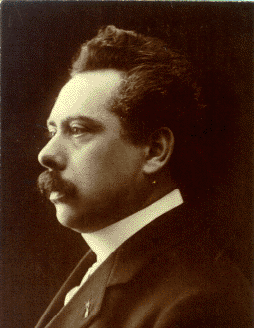 4
Maurits Sabbe, born Maurice Charles Marie Guillaume Sabbe, was a Flemish man of letters and educator who became curator of the Plantin-Moretus Museum in Antwerp.
4
Maurits Sabbe, born Maurice Charles Marie Guillaume Sabbe, was a Flemish man of letters and educator who became curator of the Plantin-Moretus Museum in Antwerp.
Émile Verhaeren
 4
Émile Adolphe Gustave Verhaeren was a Belgian poet and art critic who wrote in the French language. He was one of the founders of the school of Symbolism and was nominated for the Nobel Prize in...
4
Émile Adolphe Gustave Verhaeren was a Belgian poet and art critic who wrote in the French language. He was one of the founders of the school of Symbolism and was nominated for the Nobel Prize in...
Maurice Maeterlinck
 4
Maurice Polydore Marie Bernard Maeterlinck, also known as Count Maeterlinck from 1932, was a Belgian playwright, poet, and essayist who was Flemish but wrote in French. He was awarded the Nobel Prize...
4
Maurice Polydore Marie Bernard Maeterlinck, also known as Count Maeterlinck from 1932, was a Belgian playwright, poet, and essayist who was Flemish but wrote in French. He was awarded the Nobel Prize...
Albert Claude
 4
Albert Claude was a Belgian-American cell biologist and medical doctor who shared the Nobel Prize in Physiology or Medicine in 1974 with Christian de Duve and George Emil Palade. His elementary...
4
Albert Claude was a Belgian-American cell biologist and medical doctor who shared the Nobel Prize in Physiology or Medicine in 1974 with Christian de Duve and George Emil Palade. His elementary...
Jean Monnet
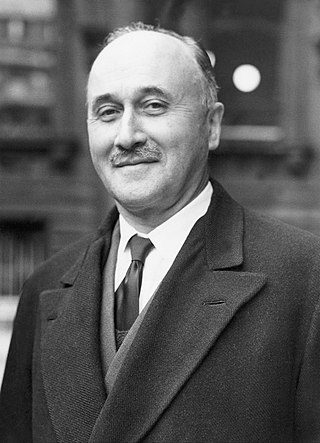 4
Jean Omer Marie Gabriel Monnet was a French civil servant, entrepreneur, diplomat, financier, administrator, and political visionary. An influential supporter of European unity, he is considered one...
4
Jean Omer Marie Gabriel Monnet was a French civil servant, entrepreneur, diplomat, financier, administrator, and political visionary. An influential supporter of European unity, he is considered one...
Robert Schuman
 4
Jean-Baptiste Nicolas Robert Schuman was a Luxembourg-born French statesman. Schuman was a Christian democratic political thinker and activist. Twice Prime Minister of France, a reformist Minister of...
4
Jean-Baptiste Nicolas Robert Schuman was a Luxembourg-born French statesman. Schuman was a Christian democratic political thinker and activist. Twice Prime Minister of France, a reformist Minister of...
Albert Schweitzer
 4
Ludwig Philipp Albert Schweitzer was an Alsatian polymath. He was a theologian, organist, musicologist, writer, humanitarian, philosopher, and physician. A Lutheran minister, Schweitzer challenged...
4
Ludwig Philipp Albert Schweitzer was an Alsatian polymath. He was a theologian, organist, musicologist, writer, humanitarian, philosopher, and physician. A Lutheran minister, Schweitzer challenged...
Immanuel Kant
 4
Immanuel Kant was a German philosopher and one of the central Enlightenment thinkers. Born in Königsberg, Kant's comprehensive and systematic works in epistemology, metaphysics, ethics, and...
4
Immanuel Kant was a German philosopher and one of the central Enlightenment thinkers. Born in Königsberg, Kant's comprehensive and systematic works in epistemology, metaphysics, ethics, and...
Jacob Jordaens
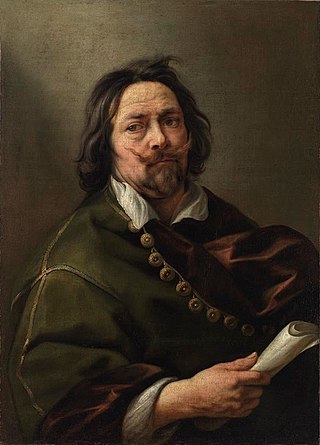 4
Jacob (Jacques) Jordaens was a Flemish painter, draughtsman and a designer of tapestries and prints. He was a prolific artist who created biblical, mythological, and allegorical compositions, genre...
4
Jacob (Jacques) Jordaens was a Flemish painter, draughtsman and a designer of tapestries and prints. He was a prolific artist who created biblical, mythological, and allegorical compositions, genre...
Pieter de Coninck
 4
Pieter de Coninck was a weaver from Bruges well known for his role in the events surrounding the Battle of the Golden Spurs. He was not the head of the weavers' guild as is popularly believed....
4
Pieter de Coninck was a weaver from Bruges well known for his role in the events surrounding the Battle of the Golden Spurs. He was not the head of the weavers' guild as is popularly believed....
Louis Paul Boon
 4
Lodewijk Paul Aalbrecht Boon was a Belgian writer of novels, poetry, pornography, columns and art criticism. He was also a painter. He is best known for the novels My Little War (1947), the diptych...
4
Lodewijk Paul Aalbrecht Boon was a Belgian writer of novels, poetry, pornography, columns and art criticism. He was also a painter. He is best known for the novels My Little War (1947), the diptych...
Dominique Pire
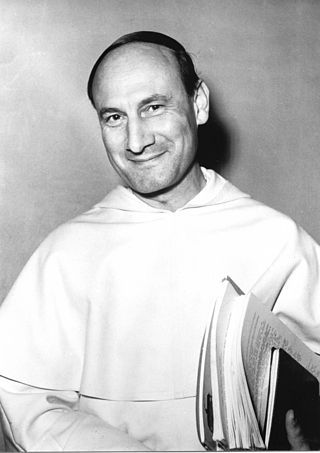 4
Dominique Pire, O.P. was a Belgian Dominican friar whose work helping refugees in post-World War II Europe saw him receive the Nobel Peace Prize in 1958. Pire delivered his Nobel lecture, entitled...
4
Dominique Pire, O.P. was a Belgian Dominican friar whose work helping refugees in post-World War II Europe saw him receive the Nobel Peace Prize in 1958. Pire delivered his Nobel lecture, entitled...
Saint Apollonia
 4
Saint Apollonia was one of a group of virgin martyrs who suffered in Alexandria during a local uprising against the Christians prior to the persecution of Decius. According to church tradition, her...
4
Saint Apollonia was one of a group of virgin martyrs who suffered in Alexandria during a local uprising against the Christians prior to the persecution of Decius. According to church tradition, her...
Rembrandt
 4
Rembrandt Harmenszoon van Rijn, usually simply known as Rembrandt, was a Dutch Golden Age painter, printmaker, and draughtsman. He is generally considered one of the greatest visual artists in the...
4
Rembrandt Harmenszoon van Rijn, usually simply known as Rembrandt, was a Dutch Golden Age painter, printmaker, and draughtsman. He is generally considered one of the greatest visual artists in the...
Lieven Gevaert
 4
Lieven Gevaert was a Flemish industrialist. His father died when he was only three years old. He started his career in the company he founded together with his mother in 1889, which produced...
4
Lieven Gevaert was a Flemish industrialist. His father died when he was only three years old. He started his career in the company he founded together with his mother in 1889, which produced...
Philippe of Belgium
 4
Philippe is King of the Belgians. He is the eldest child of King Albert II and Queen Paola. He succeeded his father upon the former’s abdication for health reasons on 21 July 2013. He married...
4
Philippe is King of the Belgians. He is the eldest child of King Albert II and Queen Paola. He succeeded his father upon the former’s abdication for health reasons on 21 July 2013. He married...
Paul Dubois (sculptor)
 4
Paul Dubois was a French sculptor and painter from Nogent-sur-Seine. His works were mainly sculptures and statues, and he was also a portrait painter.
4
Paul Dubois was a French sculptor and painter from Nogent-sur-Seine. His works were mainly sculptures and statues, and he was also a portrait painter.
César Franck
 3
César-Auguste-Jean-Guillaume-Hubert Franck was a French Romantic composer, pianist, organist, and music teacher born in present-day Belgium.
3
César-Auguste-Jean-Guillaume-Hubert Franck was a French Romantic composer, pianist, organist, and music teacher born in present-day Belgium.
Simon Stevin
 3
Simon Stevin, sometimes called Stevinus, was a Flemish mathematician, scientist and music theorist. He made various contributions in many areas of science and engineering, both theoretical and...
3
Simon Stevin, sometimes called Stevinus, was a Flemish mathematician, scientist and music theorist. He made various contributions in many areas of science and engineering, both theoretical and...
Hermann Joseph Muller
 3
Hermann Joseph Muller was an American geneticist who was awarded the 1946 Nobel Prize in Physiology or Medicine, "for the discovery that mutations can be induced by X-rays". Muller warned of...
3
Hermann Joseph Muller was an American geneticist who was awarded the 1946 Nobel Prize in Physiology or Medicine, "for the discovery that mutations can be induced by X-rays". Muller warned of...
Brigid of Kildare
 3
Saint Brigid of Kildare or Saint Brigid of Ireland is the patroness saint of Ireland, and one of its three national saints along with Patrick and Columba. According to medieval Irish hagiographies,...
3
Saint Brigid of Kildare or Saint Brigid of Ireland is the patroness saint of Ireland, and one of its three national saints along with Patrick and Columba. According to medieval Irish hagiographies,...
Jean Mermoz
 3
Jean Mermoz was a French aviator, viewed as a hero by other pilots such as Saint-Exupéry, and in his native France, where many schools bear his name. In Brazil, he also is recognized as a pioneer...
3
Jean Mermoz was a French aviator, viewed as a hero by other pilots such as Saint-Exupéry, and in his native France, where many schools bear his name. In Brazil, he also is recognized as a pioneer...
Joseph-Jean Merlot
 3
Joseph Jean Mathieu Merlot was een Belgisch politicus, burgemeester en minister voor de PSB.
3
Joseph Jean Mathieu Merlot was een Belgisch politicus, burgemeester en minister voor de PSB.
Lieven Bauwens
 3
Lieven Bauwens was a Belgian entrepreneur and industrial spy who was sent to Great Britain at a young age and brought a spinning mule and skilled workers to the European continent.
3
Lieven Bauwens was a Belgian entrepreneur and industrial spy who was sent to Great Britain at a young age and brought a spinning mule and skilled workers to the European continent.
Dirk Martens
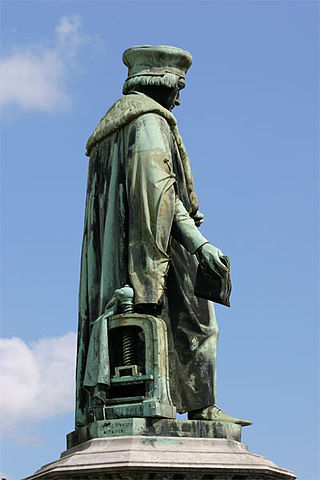 3
Dirk Martens was a printer and editor in the County of Flanders. He published over fifty books by Erasmus and the very first edition of Thomas More's Utopia. He was the first to print Greek and...
3
Dirk Martens was a printer and editor in the County of Flanders. He published over fifty books by Erasmus and the very first edition of Thomas More's Utopia. He was the first to print Greek and...
Freddy Terwagne
 3
Freddy Terwagne, né à Amay le 26 mars 1925 et mort à Liège le 15 février 1971, est un homme politique belge.
3
Freddy Terwagne, né à Amay le 26 mars 1925 et mort à Liège le 15 février 1971, est un homme politique belge.
Gaston Geens
 3
Gaston C. S. A. Geens was a Belgian politician and minister-president of Flanders.
3
Gaston C. S. A. Geens was a Belgian politician and minister-president of Flanders.
Henri Pirenne
 3
Henri Pirenne was a Belgian historian. A medievalist of Walloon descent, he wrote a multivolume history of Belgium in French and became a prominent public intellectual. Pirenne made a lasting...
3
Henri Pirenne was a Belgian historian. A medievalist of Walloon descent, he wrote a multivolume history of Belgium in French and became a prominent public intellectual. Pirenne made a lasting...
Jules Bordet
 3
Jules Jean Baptiste Vincent Bordet was a Belgian immunologist and microbiologist. The bacterial genus Bordetella is named after him. The Nobel Prize in Physiology or Medicine was awarded to him in...
3
Jules Jean Baptiste Vincent Bordet was a Belgian immunologist and microbiologist. The bacterial genus Bordetella is named after him. The Nobel Prize in Physiology or Medicine was awarded to him in...
Georges Simenon
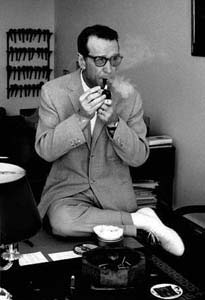 3
Georges Joseph Christian Simenon was a Belgian writer, most famous for his fictional detective Jules Maigret. One of the most popular authors of the 20th century, he published around 400 novels, 21...
3
Georges Joseph Christian Simenon was a Belgian writer, most famous for his fictional detective Jules Maigret. One of the most popular authors of the 20th century, he published around 400 novels, 21...
Werner von Siemens
 3
Ernst Werner Siemens was a German electrical engineer, inventor and industrialist. Siemens's name has been adopted as the SI unit of electrical conductance, the siemens. He founded the electrical and...
3
Ernst Werner Siemens was a German electrical engineer, inventor and industrialist. Siemens's name has been adopted as the SI unit of electrical conductance, the siemens. He founded the electrical and...
Justus Lipsius
 3
Justus Lipsius was a Flemish Catholic philologist, philosopher, and humanist. Lipsius wrote a series of works designed to revive ancient Stoicism in a form that would be compatible with Christianity....
3
Justus Lipsius was a Flemish Catholic philologist, philosopher, and humanist. Lipsius wrote a series of works designed to revive ancient Stoicism in a form that would be compatible with Christianity....
Jean-Baptist David
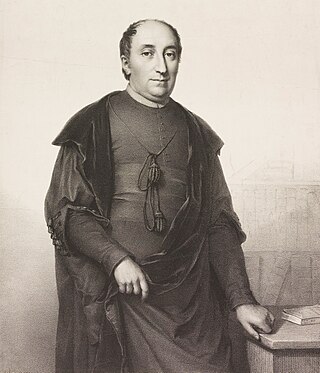 3
Jean-Baptist David was a canon and professor of Dutch and history at the Katholieke Universiteit Leuven.
3
Jean-Baptist David was a canon and professor of Dutch and history at the Katholieke Universiteit Leuven.
Albert Einstein
 3
Albert Einstein was a German-born theoretical physicist who is widely held to be one of the greatest and most influential scientists of all time. Best known for developing the theory of relativity,...
3
Albert Einstein was a German-born theoretical physicist who is widely held to be one of the greatest and most influential scientists of all time. Best known for developing the theory of relativity,...
Camille Huysmans
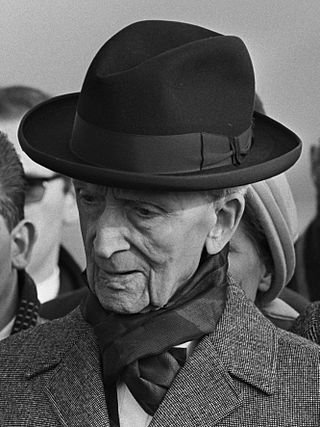 3
Jean Joseph Camille Huysmans was a Belgian politician who served as the prime minister of Belgium from 1946 to 1947.
3
Jean Joseph Camille Huysmans was a Belgian politician who served as the prime minister of Belgium from 1946 to 1947.
Anthony van Dyck
 3
Sir Anthony van Dyck was a Flemish Baroque artist who became the leading court painter in England after success in the Spanish Netherlands and Italy.
3
Sir Anthony van Dyck was a Flemish Baroque artist who became the leading court painter in England after success in the Spanish Netherlands and Italy.
Louis Lambert
 3
Louis Lambert is a politician, lawyer, and teacher from Prairieville, Louisiana. He is best known for his campaign for the 1979 Louisiana gubernatorial election, which he lost to David Treen in one...
3
Louis Lambert is a politician, lawyer, and teacher from Prairieville, Louisiana. He is best known for his campaign for the 1979 Louisiana gubernatorial election, which he lost to David Treen in one...
Nelson Mandela
 3
Nelson Rolihlahla Mandela was a South African anti-apartheid activist, politician, and statesman who served as the first president of South Africa from 1994 to 1999. He was the country's first black...
3
Nelson Rolihlahla Mandela was a South African anti-apartheid activist, politician, and statesman who served as the first president of South Africa from 1994 to 1999. He was the country's first black...
Jacob van Artevelde
 3
Jacob van Artevelde, sometimes written in English as James van Artvelde, also known as The Wise Man and the Brewer of Ghent, was a Flemish statesman and political leader.
3
Jacob van Artevelde, sometimes written in English as James van Artvelde, also known as The Wise Man and the Brewer of Ghent, was a Flemish statesman and political leader.
Henri Gatien Bertrand
 3
Henri-Gatien Bertrand was a French general who served during the French Revolutionary Wars and the Napoleonic Wars. Under the Empire he was the third and last Grand marshal of the palace, the head of...
3
Henri-Gatien Bertrand was a French general who served during the French Revolutionary Wars and the Napoleonic Wars. Under the Empire he was the third and last Grand marshal of the palace, the head of...
Constantin Meunier
 3
Constantin Meunier was a Belgian painter and sculptor. He made an important contribution to the development of modern art by elevating the image of the industrial worker, docker and miner to an icon...
3
Constantin Meunier was a Belgian painter and sculptor. He made an important contribution to the development of modern art by elevating the image of the industrial worker, docker and miner to an icon...
Emile Vinck
 3
Emile Vinck was een Belgisch senator.
3
Emile Vinck was een Belgisch senator.
Gustave Defnet
 3
Gustave Jean-Baptiste Noël Defnet est un ouvrier typographe, cofondateur et dirigeant du Parti ouvrier belge, syndicaliste, coopérateur, journaliste, conseiller communal et échevin de Saint-Gilles,...
3
Gustave Jean-Baptiste Noël Defnet est un ouvrier typographe, cofondateur et dirigeant du Parti ouvrier belge, syndicaliste, coopérateur, journaliste, conseiller communal et échevin de Saint-Gilles,...
Armand Preud'homme
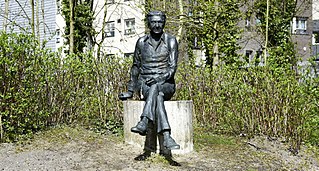 3
Armand Preud'homme was a Belgian componist and organist.
3
Armand Preud'homme was a Belgian componist and organist.
Antoine de Saint-Exupéry
 3
Antoine Marie Jean-Baptiste Roger, comte de Saint-Exupéry, known simply as Antoine de Saint-Exupéry, was a French writer, poet, journalist and aviator. He received several prestigious literary awards...
3
Antoine Marie Jean-Baptiste Roger, comte de Saint-Exupéry, known simply as Antoine de Saint-Exupéry, was a French writer, poet, journalist and aviator. He received several prestigious literary awards...
Henri Vieuxtemps
 3
Henri François Joseph Vieuxtemps was a Belgian composer and violinist. He occupies an important place in the history of the violin as a prominent exponent of the Franco-Belgian violin school during...
3
Henri François Joseph Vieuxtemps was a Belgian composer and violinist. He occupies an important place in the history of the violin as a prominent exponent of the Franco-Belgian violin school during...
Alphonse Juin
 3
Alphonse Pierre Juin was a senior French Army general who became Marshal of France. A graduate of the École Spéciale Militaire class of 1912, he served in Morocco in 1914 in command of native troops....
3
Alphonse Pierre Juin was a senior French Army general who became Marshal of France. A graduate of the École Spéciale Militaire class of 1912, he served in Morocco in 1914 in command of native troops....
Frans Hals
 3
Frans Hals the Elder was a Dutch Golden Age painter, chiefly of individual and group portraits and of tronies, who lived and worked in Haarlem.
3
Frans Hals the Elder was a Dutch Golden Age painter, chiefly of individual and group portraits and of tronies, who lived and worked in Haarlem.
Gaugericus
 3
Saint Gaugericus, in French Saint Géry was a bishop of Cambrai, France.
3
Saint Gaugericus, in French Saint Géry was a bishop of Cambrai, France.
Rennequin Sualem
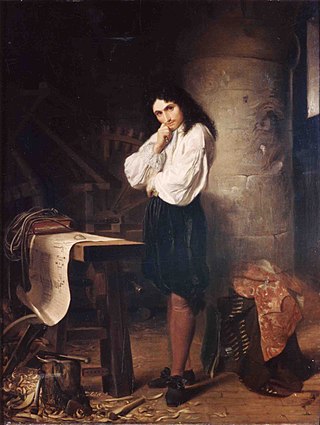 3
Rennequin Sualem was a Walloon carpenter and engineer born on 29 January 1645 in Jemeppe-sur-Meuse, in what now is Wallonia, Belgium. His given name sometimes appears as 'Renkin'.
3
Rennequin Sualem was a Walloon carpenter and engineer born on 29 January 1645 in Jemeppe-sur-Meuse, in what now is Wallonia, Belgium. His given name sometimes appears as 'Renkin'.
Jean-Adolphe de Feller
 3
Jean Antoine Adolphe de Feller was een Zuid-Nederlands edelman.
3
Jean Antoine Adolphe de Feller was een Zuid-Nederlands edelman.
Mary, mother of Jesus
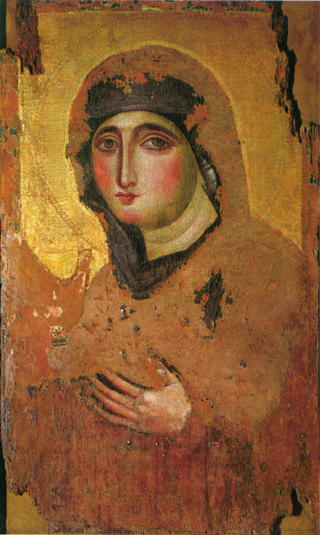 3
Mary was a first-century Jewish woman of Nazareth, the wife of Joseph and the mother of Jesus. She is a central figure of Christianity, venerated under various titles such as virgin or queen, many of...
3
Mary was a first-century Jewish woman of Nazareth, the wife of Joseph and the mother of Jesus. She is a central figure of Christianity, venerated under various titles such as virgin or queen, many of...
Jean Rey (politician)
 3
Jean Rey was a Belgian Liberal politician who served as the second president of the European Commission from 1967 to 1970. He served as European Commissioner for External Relations from 1958 to 1967....
3
Jean Rey was a Belgian Liberal politician who served as the second president of the European Commission from 1967 to 1970. He served as European Commissioner for External Relations from 1958 to 1967....
Nicolas Defrêcheux
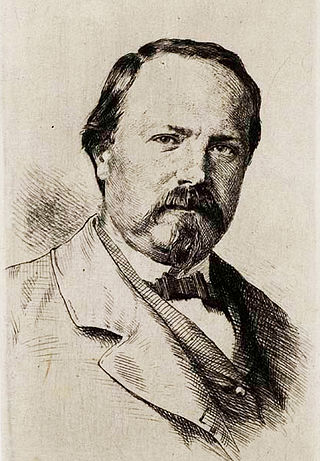 2
Nicolas Defrêcheux, né le 10 février 1825 à Liège où il meurt le 26 décembre 1874, est secrétaire du rectorat de l'université de Liège, avant de devenir appariteur à la Faculté de médecine de cette...
2
Nicolas Defrêcheux, né le 10 février 1825 à Liège où il meurt le 26 décembre 1874, est secrétaire du rectorat de l'université de Liège, avant de devenir appariteur à la Faculté de médecine de cette...
Joseph II, Holy Roman Emperor
 2
Joseph II was Holy Roman Emperor from 18 August 1765 and sole ruler of the Habsburg monarchy from 29 November 1780 until his death. He was the eldest son of Empress Maria Theresa and her husband,...
2
Joseph II was Holy Roman Emperor from 18 August 1765 and sole ruler of the Habsburg monarchy from 29 November 1780 until his death. He was the eldest son of Empress Maria Theresa and her husband,...
Albert Camus
 2
Albert Camus was a French philosopher, author, dramatist, journalist, world federalist, and political activist. He was the recipient of the 1957 Nobel Prize in Literature at the age of 44, the...
2
Albert Camus was a French philosopher, author, dramatist, journalist, world federalist, and political activist. He was the recipient of the 1957 Nobel Prize in Literature at the age of 44, the...
Vincent van Gogh
 2
Vincent Willem van Gogh was a Dutch Post-Impressionist painter who is among the most famous and influential figures in the history of Western art. In just over a decade, he created approximately 2100...
2
Vincent Willem van Gogh was a Dutch Post-Impressionist painter who is among the most famous and influential figures in the history of Western art. In just over a decade, he created approximately 2100...
Émile Tandel
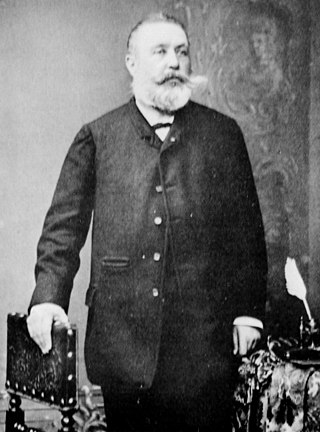 2
Émile Tandel, né le 6 septembre 1834 à Bruxelles et mort le 16 janvier 1908 à Arlon, est un auteur belge, historien de la province de Luxembourg. Il fut commissaire d’arrondissement d’Arlon-Virton et...
2
Émile Tandel, né le 6 septembre 1834 à Bruxelles et mort le 16 janvier 1908 à Arlon, est un auteur belge, historien de la province de Luxembourg. Il fut commissaire d’arrondissement d’Arlon-Virton et...
Thomas Louis Heylen
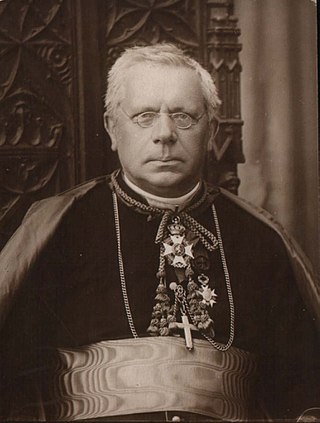 2
Thomas Louis Heylen OPraem (1856–1941) was a Belgian prelate of the Catholic Church who served as the twenty-sixth bishop of Namur in Belgium (1899–1941). He also served as President of the...
2
Thomas Louis Heylen OPraem (1856–1941) was a Belgian prelate of the Catholic Church who served as the twenty-sixth bishop of Namur in Belgium (1899–1941). He also served as President of the...
Karel van de Woestijne
 2
Carolus Petrus Eduardus Maria "Karel" van de Woestijne was a Flemish writer and brother of the painter Gustave van de Woestijne. He went to highschool at the Koninklijk Athenaeum at the Ottogracht in...
2
Carolus Petrus Eduardus Maria "Karel" van de Woestijne was a Flemish writer and brother of the painter Gustave van de Woestijne. He went to highschool at the Koninklijk Athenaeum at the Ottogracht in...
Fernand Danhaive
 2
Fernand Danhaive, né à Saint-Servais le 11 juillet 1888 où il est mort le 19 mars 1935, est un historien namurois ayant écrit dans le domaine de l'histoire locale.
2
Fernand Danhaive, né à Saint-Servais le 11 juillet 1888 où il est mort le 19 mars 1935, est un historien namurois ayant écrit dans le domaine de l'histoire locale.
Joseph Dubois
 2
Joseph Dubois, also spelled DuBois, was an American silversmith, active in New York City.
2
Joseph Dubois, also spelled DuBois, was an American silversmith, active in New York City.
Louis Daguerre
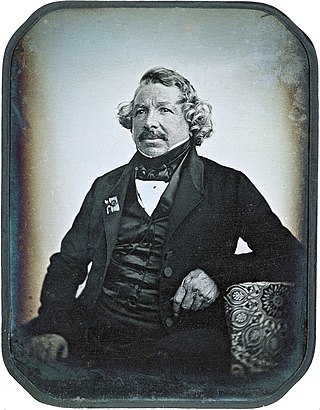 2
Louis-Jacques-Mandé Daguerre was a French artist and photographer, recognized for his invention of the eponymous daguerreotype process of photography. He became known as one of the fathers of...
2
Louis-Jacques-Mandé Daguerre was a French artist and photographer, recognized for his invention of the eponymous daguerreotype process of photography. He became known as one of the fathers of...
Marcel Lecomte
 2
Marcel Lecomte was a Belgian writer, member of the Belgian surrealist movement. In 1918 he was introduced to dadaism and Eastern philosophy by Clément Pansaers. He also started to study literature...
2
Marcel Lecomte was a Belgian writer, member of the Belgian surrealist movement. In 1918 he was introduced to dadaism and Eastern philosophy by Clément Pansaers. He also started to study literature...
Maurice Des Ombiaux
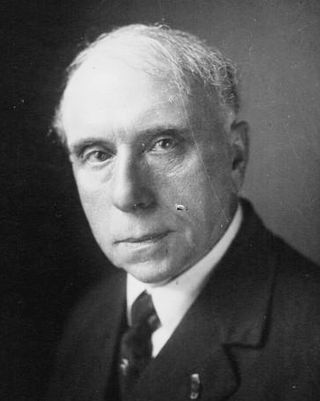 2
Maurice Desombiaux, dit Maurice Des Ombiaux (1868-1943) est un journaliste et écrivain belge.
2
Maurice Desombiaux, dit Maurice Des Ombiaux (1868-1943) est un journaliste et écrivain belge.
André Sodar
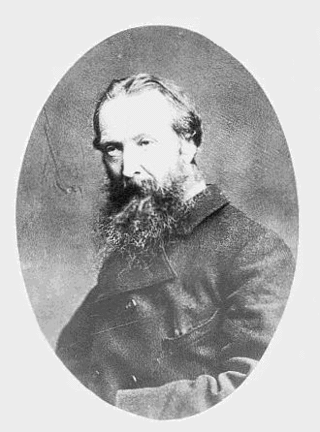 2
André Joseph Sodar, né à Dinant le 5 décembre 1829 et mort dans sa ville natale le 21 mars 1903, est un artiste peintre paysagiste de l'École belge.
2
André Joseph Sodar, né à Dinant le 5 décembre 1829 et mort dans sa ville natale le 21 mars 1903, est un artiste peintre paysagiste de l'École belge.
Jacques Brel
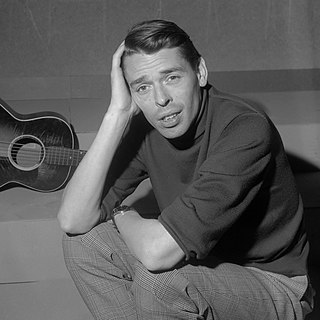 2
Jacques Romain Georges Brel was a Belgian singer and actor who composed and performed theatrical songs. He generated a large, devoted following—initially in Belgium and France, but later throughout...
2
Jacques Romain Georges Brel was a Belgian singer and actor who composed and performed theatrical songs. He generated a large, devoted following—initially in Belgium and France, but later throughout...
Bertin
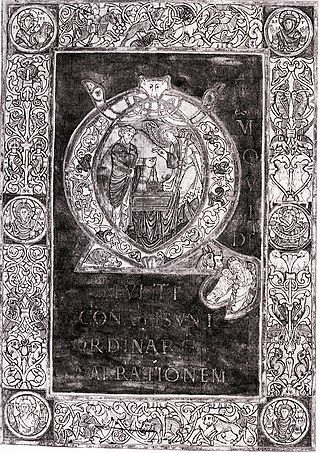 2
Bertin, also known as Saint Bertin the Great, was the Frankish abbot of a monastery in Saint-Omer later named the Abbey of Saint Bertin after him. He is venerated as a saint by the Catholic and...
2
Bertin, also known as Saint Bertin the Great, was the Frankish abbot of a monastery in Saint-Omer later named the Abbey of Saint Bertin after him. He is venerated as a saint by the Catholic and...
Marie Popelin
 2
Marie Popelin was a Belgian jurist and early feminist political campaigner. Popelin worked with Isabelle Gatti de Gamond in the development of women's education and, in 1888, became the first Belgian...
2
Marie Popelin was a Belgian jurist and early feminist political campaigner. Popelin worked with Isabelle Gatti de Gamond in the development of women's education and, in 1888, became the first Belgian...
Hector Deprez
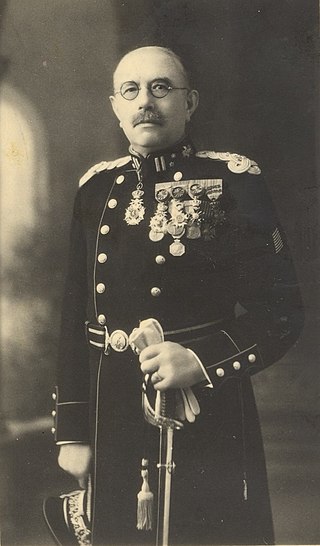 2
Hector Deprez was een Belgische generaal.
2
Hector Deprez was een Belgische generaal.
Edward Anseele
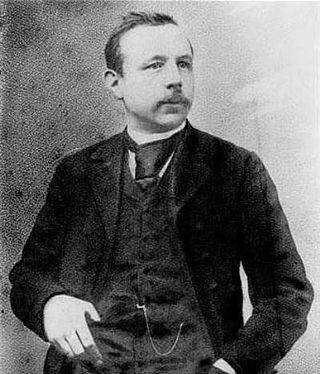 2
Edward Anseele was a Belgian socialist politician. Edward Anseele became active in the early Belgian socialist movement. Anseele attended the Royal Athenaeum in Ghent until the age of 17.
2
Edward Anseele was a Belgian socialist politician. Edward Anseele became active in the early Belgian socialist movement. Anseele attended the Royal Athenaeum in Ghent until the age of 17.
Albert Stainier
 2
Albert Stainier, luitenant bij de Belgische strijdkrachten in Groot-Brittannië tijdens de Tweede Wereldoorlog.
2
Albert Stainier, luitenant bij de Belgische strijdkrachten in Groot-Brittannië tijdens de Tweede Wereldoorlog.
Julius Sabbe
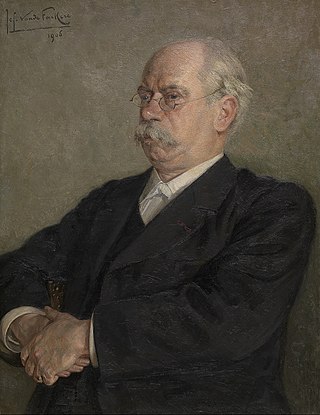 2
Julius Ludovicus Maria Sabbe was a Flemish publisher and an active member of the Flemish movement. From 24 September 1869 on, he taught Dutch at the Koninklijk Atheneum of Bruges.
2
Julius Ludovicus Maria Sabbe was a Flemish publisher and an active member of the Flemish movement. From 24 September 1869 on, he taught Dutch at the Koninklijk Atheneum of Bruges.
Frans Kusters (schrijver)
 2
Frans Kusters was een Nederlandse schrijver van hoofdzakelijk korte verhalen. Hij studeerde rechten aan de Katholieke Universiteit Nijmegen. Na zijn studie werd hij daar parttime wetenschappelijk...
2
Frans Kusters was een Nederlandse schrijver van hoofdzakelijk korte verhalen. Hij studeerde rechten aan de Katholieke Universiteit Nijmegen. Na zijn studie werd hij daar parttime wetenschappelijk...
Alfons Jeurissen (schrijver)
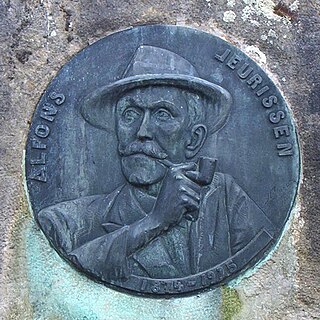 2
Alfons Jeurissen is een Belgisch schrijver. Hij was een verteller van verhalen die zich veelal in de Kempen afspeelden. In deze verhalen waren talrijke sagen verwerkt.
2
Alfons Jeurissen is een Belgisch schrijver. Hij was een verteller van verhalen die zich veelal in de Kempen afspeelden. In deze verhalen waren talrijke sagen verwerkt.
André Joseph Lemaire
 2
André Joseph Lemaire was a French general of artillery during the French Revolutionary Wars. He served in Jean-Baptiste Jourdan's Army of the Danube in the invasion of southwestern Germany in 1799....
2
André Joseph Lemaire was a French general of artillery during the French Revolutionary Wars. He served in Jean-Baptiste Jourdan's Army of the Danube in the invasion of southwestern Germany in 1799....
Achille Chavée
 2
Achille Chavée, né le 6 juin 1906 à Charleroi et mort à La Hestre le 4 décembre 1969, est un poète belge de langue française. Il est une figure du surréalisme wallon hennuyer.
2
Achille Chavée, né le 6 juin 1906 à Charleroi et mort à La Hestre le 4 décembre 1969, est un poète belge de langue française. Il est une figure du surréalisme wallon hennuyer.
Victor Larock
 2
Victor Joseph Léonard Larock was a Belgian politician for the country's Socialist Party.
2
Victor Joseph Léonard Larock was a Belgian politician for the country's Socialist Party.
Léon Blum
 2
André Léon Blum was a French socialist politician and three-time Prime Minister of France.
2
André Léon Blum was a French socialist politician and three-time Prime Minister of France.
Saint Patrick
 2
Saint Patrick was a fifth-century Romano-British Christian missionary and bishop in Ireland. Known as the "Apostle of Ireland", he is the primary patron saint of Ireland, the other patron saints...
2
Saint Patrick was a fifth-century Romano-British Christian missionary and bishop in Ireland. Known as the "Apostle of Ireland", he is the primary patron saint of Ireland, the other patron saints...
Raoul Warocqué
 2
Raoul Warocqué, was a Belgian industrialist from Wallonia.
2
Raoul Warocqué, was a Belgian industrialist from Wallonia.